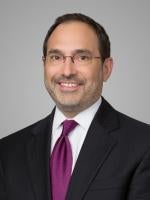On July 19, 2017, the New York State Workers’ Compensation Board (“WCB” or the “Board”) issued its final regulations (“Final Regulations”) for the New York State Paid Family Leave Benefits Law (“PFLBL” or the “Law”). The WCB first published regulations to the PFLBL in February 2017, and then updated those regulations in May (collectively, the “Prior Regulations”).
While the Final Regulations did clarify some outstanding questions, many questions remain, particularly pertaining to the practical logistics of implementing the Law, such as the tax treatment of deductions and benefits, paystub requirements, certain differences between requirements that pertain to self-funding employers and those employers intending to obtain an insurance policy, and what forms and procedures will apply.
As we previously reported, when the PFLBL becomes effective on January 1, 2018, most employees working in New York State will be eligible for paid family leave (“PFL”) benefits. Employers are not responsible for actually providing pay to employees during a period of PFL; rather, employee payroll deductions will fund an insurance policy, which will either be managed by a third party or self-funded by the employer, from which employees will receive PFLBL benefits.
On the same day the Final Regulations were published, the WCB also issued an Assessment of Public Comment (the “Assessment”), which addresses certain public comments to the Prior Regulations. The State has also published two fact sheets – one for employees and one for employers – outlining the basic elements of the PFLBL.
The following summary addresses the updates in the Final Regulations, as compared to the Prior Regulations, as well as some additional insight from the Assessment.
Collective Bargaining Agreements. The Final Regulations clarified that employers that have employees or classes of employees subject to a collective bargaining agreement (“CBA”) are not required to supply such employees with PFL coverage in accordance with the terms of the Law, but only so long as the CBA:
-
provides paid family leave benefits at least as favorable as those provided in the Law; and
-
does not include a provision whereby otherwise-eligible employees may waive their rights to paid family leave or otherwise opt-out of the law (except in accordance with the opt-out provisions in the Law for employees who will not become eligible for PFL).
The Final Regulations specify that, except as noted above, a CBA may, indeed, contain paid family leave provisions that differ from the requirements in the Final Regulations. Where a CBA does not provide a different rule, however, the Final Regulations and the Law will govern.
Employee Contributions. The WCB declined to amend the Final Regulations with respect to whether employers must begin employee payroll deductions prior to January 1, 2018. In the Assessment, the Board confirmed that deductions under the Law were permitted to begin on July 1, 2017, but there is no requirement to make deductions prior to January 1, 2018; thus, in 2017, payroll deductions for employee contributions is a permissive choice that employers may make.
Further, the Assessment noted that the Law does not require notification that deductions will begin; however, it is generally best practice to notify employees prior to deducting from employees’ wages. Neither the Assessment nor the Final Regulations address whether as of January 1, 2018, an employer may opt to pay the contributions on its employees’ behalf, or whether alternatively, employers must deduct from employee’s paychecks for this contribution.
Interaction Between Qualifying Leave and Benefits in 2017 and 2018.The Board received a comment asking whether an employee who took leave to bond with his or her child in 2017 will still be eligible for up to the full 8 weeks of PFL in 2018, notwithstanding the leave already taken. The Board stated in the Assessment that employees will, indeed, be eligible for up to 8 additional weeks of leave in 2018 under NYPFLBL, even if the employee exhausted all applicable leave under federal law and the employer’s policies in 2017.
The Law limits the use of PFL and New York State short-term disability benefits (“STD”) in a 52-week period to a total of 26 weeks, which essentially reduces an employee’s eligible for STD based on the amount of PFL used. On the positive side, the Assessment noted that in 2018, the 52-week lookback period includes leave taken in 2017. Thus, an employee who has utilized STD in 2017 will have his or her 26-week allocation during the applicable 52-week period reduced by any STD utilized during 2017 (so long as it was used within the applicable 52-week look-back period).
Waivers of PFL. The Final Regulations revised employers’ requirements to offer a waiver from PFL deductions from permissive to mandatory. The language previously stated that employees who do not meet the PFLBL eligibility requirements “may” be provided the option for a waiver – the “may” has been changed to “shall.” The Assessment clarified that it is the employee’s choice of whether to complete a waiver, not the employer’s.
Coverage Outside New York. The Assessment confirmed that the PFLBL applies to employees who work in New York State. If an employee works outside of New York State, and only “incidentally” works in New York, those employees are not covered by the Law.[1]
Calculation of Daily Benefits. The Final Regulations amended the calculation of benefits when an employee is taking PFL in daily increments (rather than weekly increments). Under the Prior Regulations, if an employee worked a partial week prior to beginning PFL, then, in calculating the level of benefits to which the employee would be eligible for the day(s) off based on the eight weeks prior to taking leave, the employee’s weekly rate could be reduced by the day(s) the employee did not work in that final week. For example, the 8 week period could include a partial week of work, thus reducing the employee’s average wages. The Final Regulations use the same 8-week period as calculating an average weekly wage, which will exclude the final partial week of leave.
Positions with Breaks in Service – Impact on Eligibility. The Final Regulations added a paragraph to the “Eligibility” section, so as to clarify how to calculate consecutive weeks of service for positions that inherently contemplate breaks in service, such as professors who have semester breaks. For such positions, the 26-consecutive week period requirement may be tolled during periods of absence that are due to the nature of that employment. In other words, with respect to such individuals’ employment, the breaks in service would not be considered weeks worked when considering whether the individual had worked at least 26 weeks in the prior 52-week period (for eligibility purposes), but also would not re-start the period of employment to determine eligibility under the Law.
Returning Surplus Contributions. The Board received two comments seeking clarification regarding the requirement to return surplus contributions. The Final Regulations provide that employers shall use the employee contributions to provide PFL benefits, which “means to pay for a policy or self-insure.” The Assessment states that employers are required to return to employees any “surplus amount withheld that exceeds the actual cost” of the annual premium of the PFL policy. No changes were made to the Final Regulations.
Interaction with New York City Earned Sick Time Act (“ESTA”). The Assessment confirms the language in the Prior Regulations that employees may elect to use paid time off (such as vacation, personal days, or sick time) to receive full salary during PFL, but that it is not mandatory. As the PFLBL does not cover an employee’s own illness, PFL would only run concurrently with sick leave under ESTA for purposes of caring for an employee’s family member.
[1] While the Law, Final Regulations, and Assessment do not define “incidentally,” the New York State PFLBL website indicates that employees must work 30 or more days in a calendar year New York to be covered.






 />i
/>i
